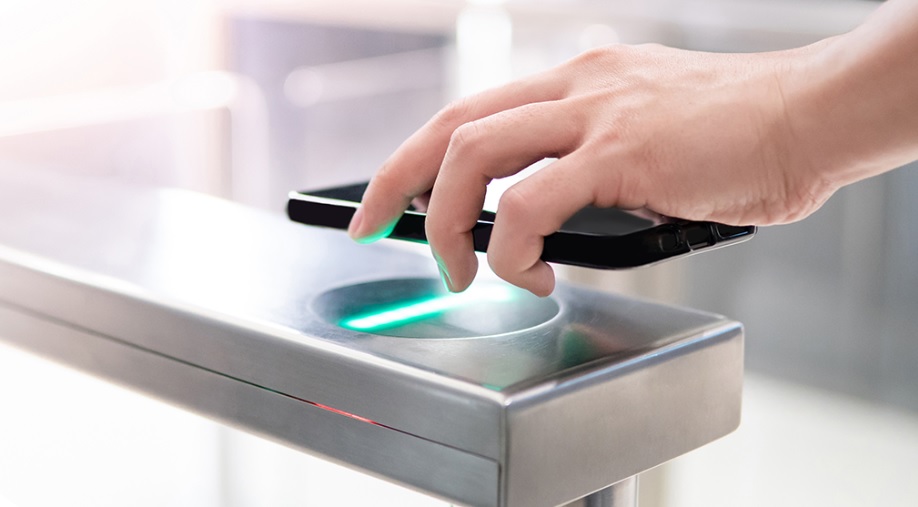
Adding commercial access control to your business security system
by Security 101, Monica Gonzalez
As businesses continue to face an ever-increasing number of sophisticated security challenges, the need for robust security measures has never been more critical. Thankfully, the current state of the security tech industry is incredibly dynamic, constantly evolving and adapting to counteract the rapidly emerging and evolving threats in the physical and digital landscape.
With cutting-edge technologies and innovative solutions, security professionals are working tirelessly to stay one step ahead and ensure the protection of sensitive data and assets. By embracing these advancements and staying informed about the latest security trends, businesses can fortify their defenses and navigate the complex security landscape with confidence and peace of mind.
THE CASE FOR COMMERCIAL ACCESS CONTROL
Commercial access control plays a pivotal role in modern business security systems. Access control systems regulate who can enter your premises, when they can enter, and where they can go once inside. This granular control over access rights enhances overall security and mitigates potential risks.
BENEFITS OF ACCESS CONTROL
- Improved security: Access control systems prevent unauthorized access, reducing the risk of theft, vandalism, and other security breaches.
- Enhanced flexibility: These systems allow businesses to adapt quickly to changes such as staff turnover or shifts in operational hours.
- Efficient record keeping: Access control systems log every entry and exit, providing valuable data for security audits or investigations.
TYPES OF PHYSICAL ACCESS CONTROL SYSTEMS
Physical access control systems can be broadly divided into three categories:
- Discretionary Access Control (DAC): This is the most flexible type of access control. In a DAC system, the business owner determines who is allowed in a particular location, effectively setting the level of security.
- Mandatory Access Control (MAC): MAC systems are more structured and secure than DAC. They don’t allow owners to change the access settings, which can be beneficial in high-security areas where strict access rules need to be maintained.
- Role-Based Access Control (RBAC): Also known as Non-Discretionary Access Control, RBAC systems grant access based on the role of the user within the organization. This is commonly used in businesses where individuals need access to different areas depending on their job responsibilities.
Each of these systems has its strengths and weaknesses, and the choice between them depends on the specific needs and security requirements of your business.
In addition to the broad categories of access control systems (DAC, MAC, and RBAC), there are various forms of technology that can be used to authenticate and verify access.
- Biometric access control: This system uses unique physical or behavioral characteristics—such as fingerprints, iris patterns, or voice recognition—to verify identity. Its high level of security makes it ideal for sensitive areas.
- Card readers: These systems require users to swipe or insert a card with a magnetic strip or RFID chip. The card contains the individual’s access credentials, which the reader verifies.
- Key fobs: Similar to card readers, key fobs are small, portable devices that wirelessly transmit a coded signal to the access control system.
- Keypads: These systems require users to enter a numeric code. They are often used in combination with other forms of access control for increased security.
- Smartphone access control: With the rise of mobile technology, smartphones can now be used to grant access. This system can use anything from an app or a QR code to Bluetooth and NFC technologies.
Each form comes with its own advantages and potential limitations, and the choice among them largely depends on the organization’s specific needs and security goals.
INTEGRATING ACCESS CONTROL WITH EXISTING SECURITY FEATURES
Access control systems can be seamlessly integrated with existing security features, such as video surveillance, to enhance their effectiveness. By coupling access control with video surveillance, you not only have the ability to control who has access to your premises but also gain visual confirmation of their identity. This integration offers an additional layer of security and peace of mind, ensuring that your assets and property are well-protected.
When integrating access control with other physical security systems in a business environment, several key points should be considered.
First and foremost, the compatibility of the systems must be ensured. Not all access control systems may work seamlessly with existing security infrastructure, so technical compatibility needs to be thoroughly checked.
Secondly, the ease of use and user-friendliness of the integrated system should be evaluated, as complex systems can lead to errors and reduced efficiency.
Thirdly, the cost implications must be considered, including not just the initial setup costs but also ongoing maintenance and potential upgrade needs.
Lastly, privacy concerns must be addressed, as integrating systems often involve handling sensitive data. Necessary steps should be taken to ensure data protection and compliance with relevant regulations.
With the continuous evolution of threats, businesses must stay ahead of the curve. This means adopting state-of-the-art security solutions, including sophisticated access control systems. As security systems become more intelligent and integrated, access control will continue to be a cornerstone of business security.
These solutions are no longer an optional extra but an essential component of any comprehensive business security system. Ensure your business is protected by leveraging the benefits of access control today.
